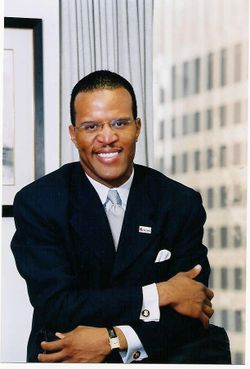 Earlier this weekend I appeared on CNN to talk about both the growing housing and economic crisis as well as the recently unveiled Obama Administration Housing plan. In short, I like the Obama plan, and I believe it will help potentially millions of Americans, but mostly those in their home but under water with their equity, and unable to refinance. It also helps those who will see a reset of their interest rate coming soon, and this alone will impact a great number of people — for the good. Good job Mr. President.
Earlier this weekend I appeared on CNN to talk about both the growing housing and economic crisis as well as the recently unveiled Obama Administration Housing plan. In short, I like the Obama plan, and I believe it will help potentially millions of Americans, but mostly those in their home but under water with their equity, and unable to refinance. It also helps those who will see a reset of their interest rate coming soon, and this alone will impact a great number of people — for the good. Good job Mr. President.
There is also a program that is designed for those who have fallen behind on their mortgage, and there are financial and even judicial incentives for lenders to play ball. This is all good, and a very positive step in the right direction. But to solve this problem — which is now as much psychological as it is financial – it simply may not be big enough, or more so, comprehensive enough. What I mean is that this is a tactical response (and a needed one), but what is needed is more so a strategic solution. The recently announced FDIC mortgage modification program, working well with IndyMac Bank and Downey Savings Bank, is the best I have seen thus far, and in many ways the Obama plan smartly mirrors a number of its features. FDIC Chair Sheila Bair is one of the smartest people I know working on this problem, and more policy makers need to listen to her.
My plan.
I suggest that we also consider attacking this problem at its core — restore confidence in the basic financial and economic system,first by linking the housing crisis (real people and real problems) with the banking crisis (overall economic stability and credit system) with ONE comprehensive solution. The government can create what many refer to as a "bad bank," trading "good will" (not cash) for bad assets with banks. This may allow the bank to get these toxic assets off of their books, and to stop weighing down their balance sheet and sucking up booked capital (capital listed on their financial statement, books and records with the government) needed to be rated as "safe and sound" by banking regulators. Every time asset quality goes down, real or perceived, whole or in part, the bank takes a charge to their capital and then needs to "raise more money" (and these days, that means most likely from the government, or you and me).
The result of moving forward in this way would be (1) transparency and a stabilized capital base for the banks ("finding a bottom"), which will allow investors to have renewed confidence to invest in banks, and (2) true control of the bad assets by a truly patient investor, with a side mission of "public good," meaning the federal government. With this, the government can then fashion a truly comprehensive resolution for the millions of homeowners (as differentiated from investors and those who purchase a second home, etc) who are either under water or behind or in a preventable foreclosure (meaning that with a loan modification they could afford to stay in the home, as their primary problem is what I call financial illiteracy "payment shock."). The government could then adopt a total resolution along the lines of the FDIC loan modification program, which I think is really well designed.
This new program would seek to get the borrower into a payment lane they can afford, by (1a) reducing the interest rate, (2a) extending the loan term to as much as 40 years amortization, (3a) and deferring part of the principal loan amount. Everyone wins and there would be little to no "unjust enrichment." In other words, this program would be for individuals living in their primary residence, not investors and speculators. Some of these recommendations I also made last year when my President's Council on Financial Literacy, Committee on the Under-Served, convened a meeting on "The Future of Responsible Sub-Prime Mortgage Lending." You can download that report here.
The bonus of the "bad bank" approach is that, done right, the government (and by extension the American tax payer) can re-market these properties and loan portfolios to entrepreneurs, investors and market makers, very much like the RTC (Resolution Trust Corporation) did during the savings and loan crisis, and return a good portion of the "purported losses" back through sales of these same assets. Translation: America would no longer be throwing away good money after bad.
I would not be surprised if some of these properties and portfolios, under this structure, actually would start producing a return at a premium to their discounted values in time.
The market is not rational right now, and just like in good times there was "irrational exuberance," today there seems to be an endemic case of "irrational fear." And when you are in the confidence business (which is the fuel that the global economy operates on), fear is a real prosperity killer (watch for my upcoming book on LOVE LEADERSHIP, in a fear-based world, by Jossey-Bass, later this year).
Let's restore confidence in the American free-enterprise system, and in ourselves, today, with a bold yet practical comprehensive solution.
And while we are at it, let's make sure this crisis never happens again by insuring that the next generation of investors and global consumers are steeped in financial literacy education. You will have to be the mortgage police and credit and financial police in your household! Read the complete annual report to the President of the United States, where the President's Council makes a case for 15 financial literacy federal policy recommendations — some of which Congress is moving on now.
John Hope Bryant is the founder, chairman and chief executive officer of Operation HOPE, serves as vice chairman of the U.S. President's Advisory Council on Financial Literacy, and chairman of the Council Committee on the Under-Served.
